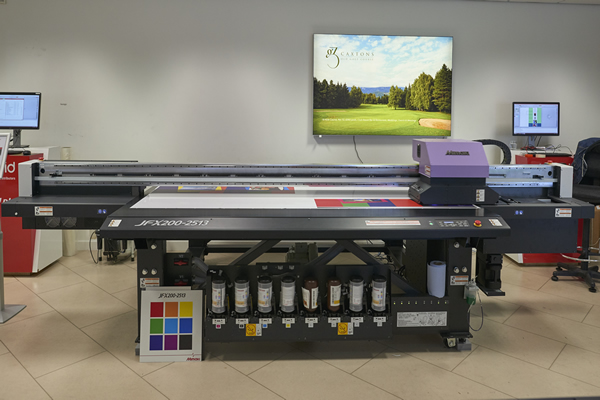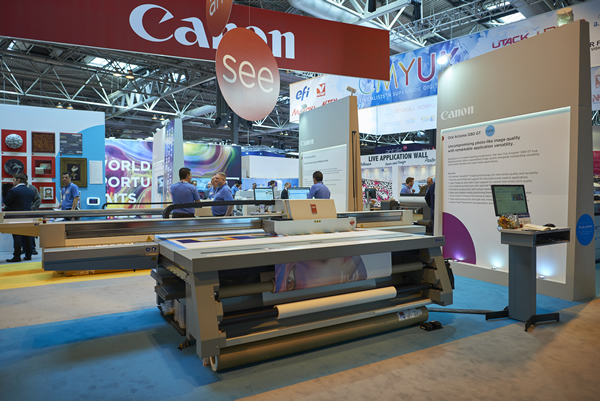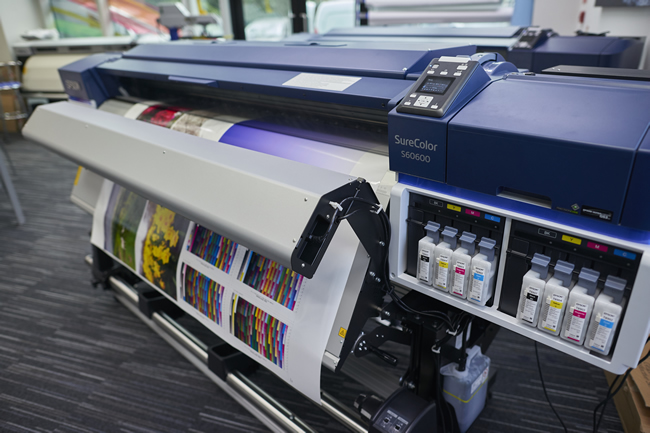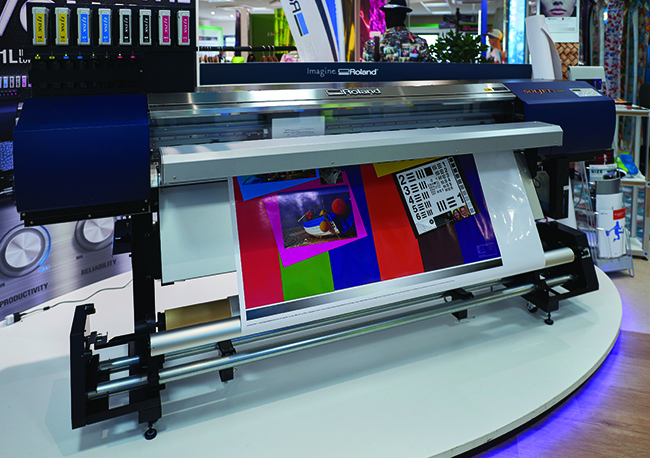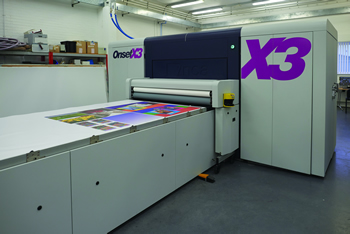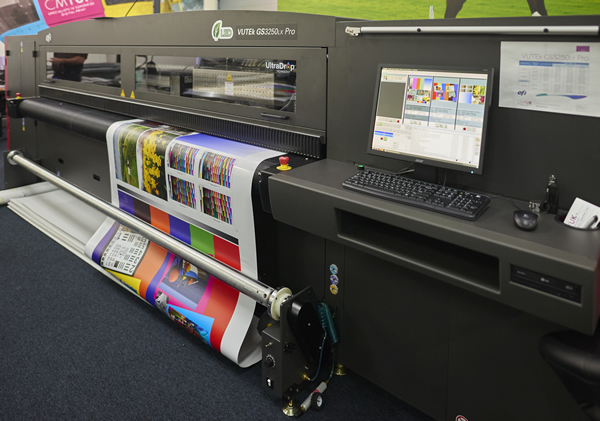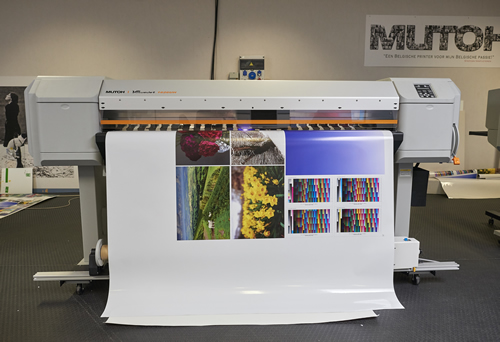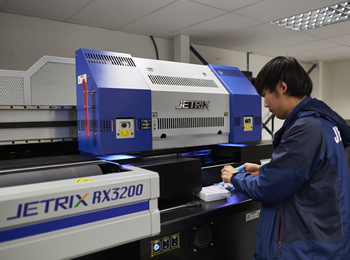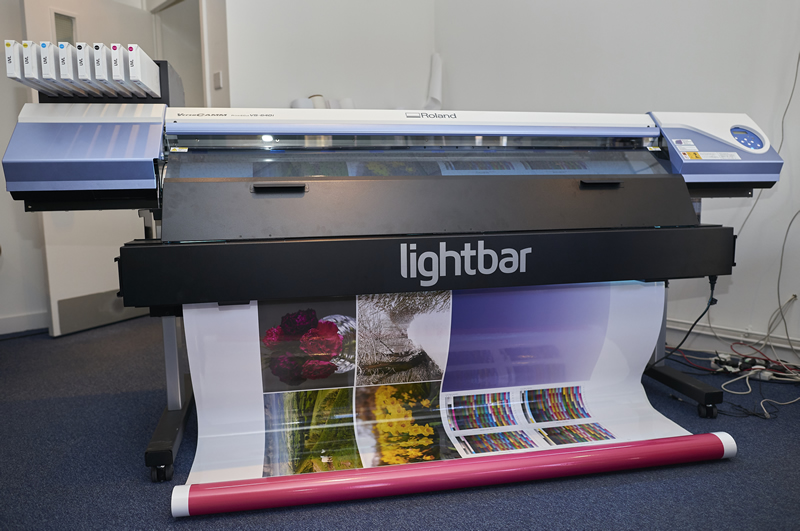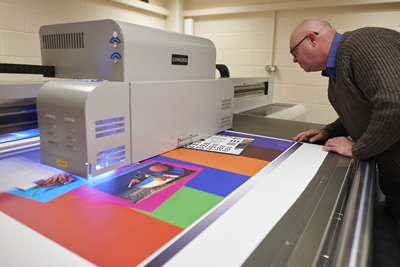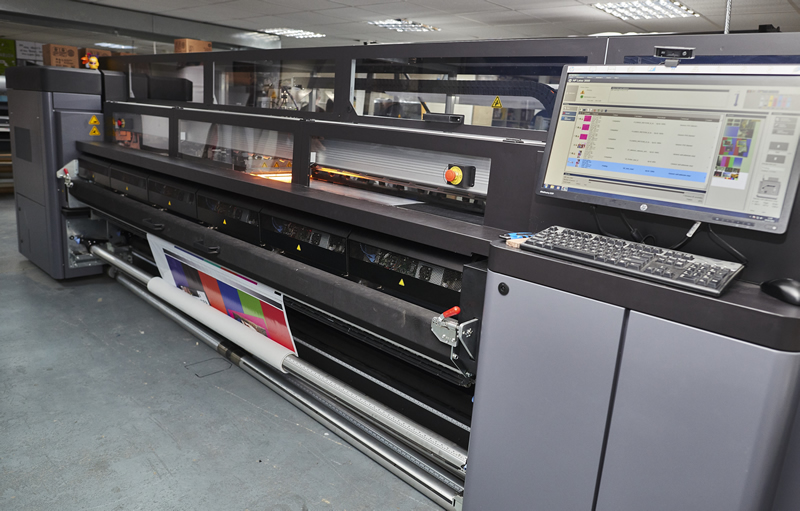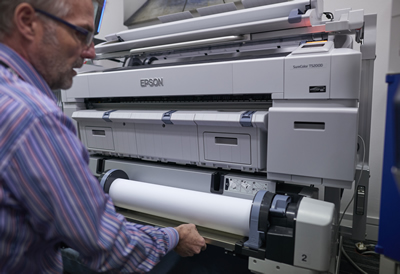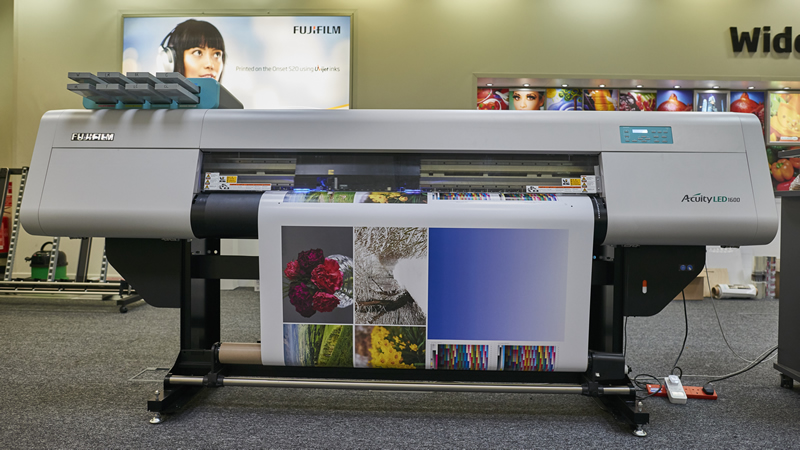Mimaki’s entry-level flatbed has proven popular since it was first launched. Nessan Cleary check’s it out to see why.
On Test
ON TEST: Canon Arizona 1280GT
Canon’s latest iteration of its long running Arizona printers is the 1200 series but how well does this stand up? Nessan Cleary went to find out.
ON TEST: Epson SC-S60600
Epson has updated its solvent signage printers but how much of an improvement are they? Nessan Cleary went to find out.
ON TEST: Roland SolJet EJ640
The SolJet EJ640 is the latest in a long line of solvent printers from Roland but does it have anything new to offer? Nessan Cleary put it to the test.
ON TEST: Inca Digital Onset X3
Conventional wisdom says that we can choose between speed or image quality, but Inca Digital’s new Onset X3 promises both. Nessan Cleary put it to the test.
ON TEST: EFI GS3250LX
At 3.2m wide, this is one of the biggest wide-format machines to offer LED curing at a speed suitable for high-volume production environments. Nessan Cleary puts it through it’s paces.
LED curing is becoming increasingly common, particularly amongst smaller printers though many people doubt that it can be used with the bigger, more productive machines. So EFI caused a stir when it first announced the 3.2m wide GS3250LX, one of the biggest UV wide format printers to use LED curing. With around a hundred already installed in the UK, it's obviously proving popular.
ON TEST: Agfa Jeti Mira 2732
Agfa has made a determined play for the mid-market flatbed sector with its Jeti Mira, so Nessan Cleary went to test its performance.
Over the past year or so we’ve seen a number of mid-market flatbeds launched, which offer considerably more productivity and the potential for volume ink savings over smaller flatbeds, but without the huge cost of the very fastest machines. Earlier this year Agfa launched the Jeti Mira, to target exactly this market. A few weeks ago we travelled to Agfa's European demo centre near Antwerp, Belgium to put it through its paces.
ON TEST: Mutoh ValueJet VJ-1626UH
Mutoh is targeting this entry-level LED UV printer at the quality end of the market, but how well does it do in our test? Nessan Cleary investigates.
The ValueJet 1626UH is a 1.6m wide UV hybrid printer, designed to produce high quality prints for entry level volume printers, as well as prototypes for packaging. It uses LED curing and so Mutoh has marketed it as a speciality and industrial printer, to distinguish it from its range of solvent printers, which are also called ValueJets. It takes a standard range of media, including vinyl, canvas and wallpaper, as well as most rigid media up to 15mm thick, and up to 15kg in weight.
ON TEST: Jetrix RX3200
Having been impressed with the Jetrix flatbed he tested last year Nessan Cleary went to see if the new roll-to-roll printer would be as good.
Korean company Inktec has built up a good reputation for its Jetrix range of UV-curable printers. Last year Image Reports tested one of the flatbeds and booked a return trip earlier this year when Inktec announced a couple of UV-curable roll-to-roll printers in the run up to Fespa 2015. The RX3200 on test this time around, is a 3.2m wide printer. There’s also a 5m wide version, the RX5000, which was shown on the Jetrix stand at Fespa 2015, though Ben Woodruff, sales manager at Inktec Europe, believes that the 3.2m machine will prove more popular here in the UK.
ON TEST: Colorific Lightbar
This kit is an optional addition rather than a printer in its own right, but it’s in an interesting process as Nessan Cleary finds out.
Most printers fit into an easily definable category, such as solvent or UV-curable, but for this month's test we've looked at a hybrid approach. The Colorific Lightbar is based around its UV Light ink, which is effectively a UV-curable ink in a solvent carrier - and thus promises to give the best of both technologies while eliminating their downsides.
ON TEST: Longier Hunter FR3750
Longier has produced a flatbed printer at a reasonable price but does it have the print quality to compete in the UK market? Nessan Cleary puts tries it out.
Whether deserved or not, Chinese inkjet printers have generally had a poor reputation here in the West for quality and reliability. But Paul Serellis of Eazy Print, whom we met for last month's Hands On, was so enthusiastic over his Longier flatbed that we were intrigued enough to have a proper look ourselves.
ON TEST: HP Latex 3000
The HP Latex 3000 was designed as a production machine but can it handle both image quality and high speeds? Nessan Cleary puts it to the test.
Last year we tested HP’s 26500 entry-level latex printers but there are also several larger models so we’ve been back to put the top of the range Latex 3000 through its paces. This is a fairly large roll-to-roll printer, capable of taking media up to 3.2m or two rolls up to 1.6m each side by side.
ON TEST: Epson SC-T5200D
Epson’s T-series aqueous ink printers are aimed at the crossover point between technical drawings and graphics. Nessan Cleary tests the printer to see how well it performs.
So far in this test series we've tried a number of solvent and UV-curable printers, and even a couple of latex machines, but this is the first time that we've looked at an aqueous ink printer. The T-series is Epson's latest wide-format offering and aims to bridge the crossover point between CAD and graphics. As such the emphasis is on value for money rather than image quality, though it's got some nice features.
On Test: Fujifilm Acuity 1600 LED
Roll-fed UV printers rely on image quality to justify their price tag but how well does the Acuity 1600 LED acquit itself? Nessan Cleary puts it to the test.
Elsewhere in this issue we’ve looked at UV LED curing so it seemed appropriate to test Fujifilm’s Acuity 1600 LED printer this month. This is a roll-fed UV printer that is based on a Mimaki chassis, though the print engine is all down to Fujifilm. The printheads are Fujifilm Dimatix Q class heads, which are the same industrial class heads used in the more expensive Inca Onset printers that Fujifilm also sells.


